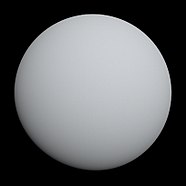Kepler-440b
Coordinates:  19h 01m 23.99s, +41° 27′ 07.94″
19h 01m 23.99s, +41° 27′ 07.94″
| Discovery date | 2015[2] |
|---|---|
| Transit | |
| Orbital characteristics | |
| 0.24200 AU (36,203,000 km) | |
| Eccentricity | >0.340 |
| 101.11141000 d | |
| Inclination | 89.930 |
| Star | Kepler-440 |
| Physical characteristics | |
Mean radius | 1.860 R🜨 |
| Temperature | 273 K (0 °C; 32 °F).[3] |
Kepler-440b (also known by its
transit method, in which the dimming effect that a planet causes as it crosses in front of its star is measured. NASA announced the confirmation of the exoplanet on 6 January 2015.[4]
Confirmed exoplanet
Kepler-440b is a [super-Earth] with a radius 1.86 times that of Earth. The planet orbits Kepler-440 once every 101.1 days.[1]
Habitability
The planet was announced as being located within the
| Notable Exoplanets – Kepler Space Telescope |
|---|

Confirmed small exoplanets in habitable zones.
(Kepler-62e, Kepler-62f, Kepler-186f, Kepler-296e, Kepler-296f, Kepler-438b, Kepler-440b, Kepler-442b) (Kepler Space Telescope; 6 January 2015).[4] |
| Earth | Kepler-440b |
|---|---|

|

|
See also
References
- ^ S2CID 8512655.
- ^ Staff (2015). "Planet Kepler-440 b". Extrasolar Planets Encyclopaedia. Retrieved 11 January 2015.
- ^ "HEC: Data of Potential Habitable Worlds". Archived from the original on 1 June 2012. Retrieved 25 January 2015.
- ^ a b Clavin, Whitney; Chou, Felicia; Johnson, Michele (6 January 2015). "NASA's Kepler Marks 1,000th Exoplanet Discovery, Uncovers More Small Worlds in Habitable Zones". NASA. Retrieved 6 January 2015.




